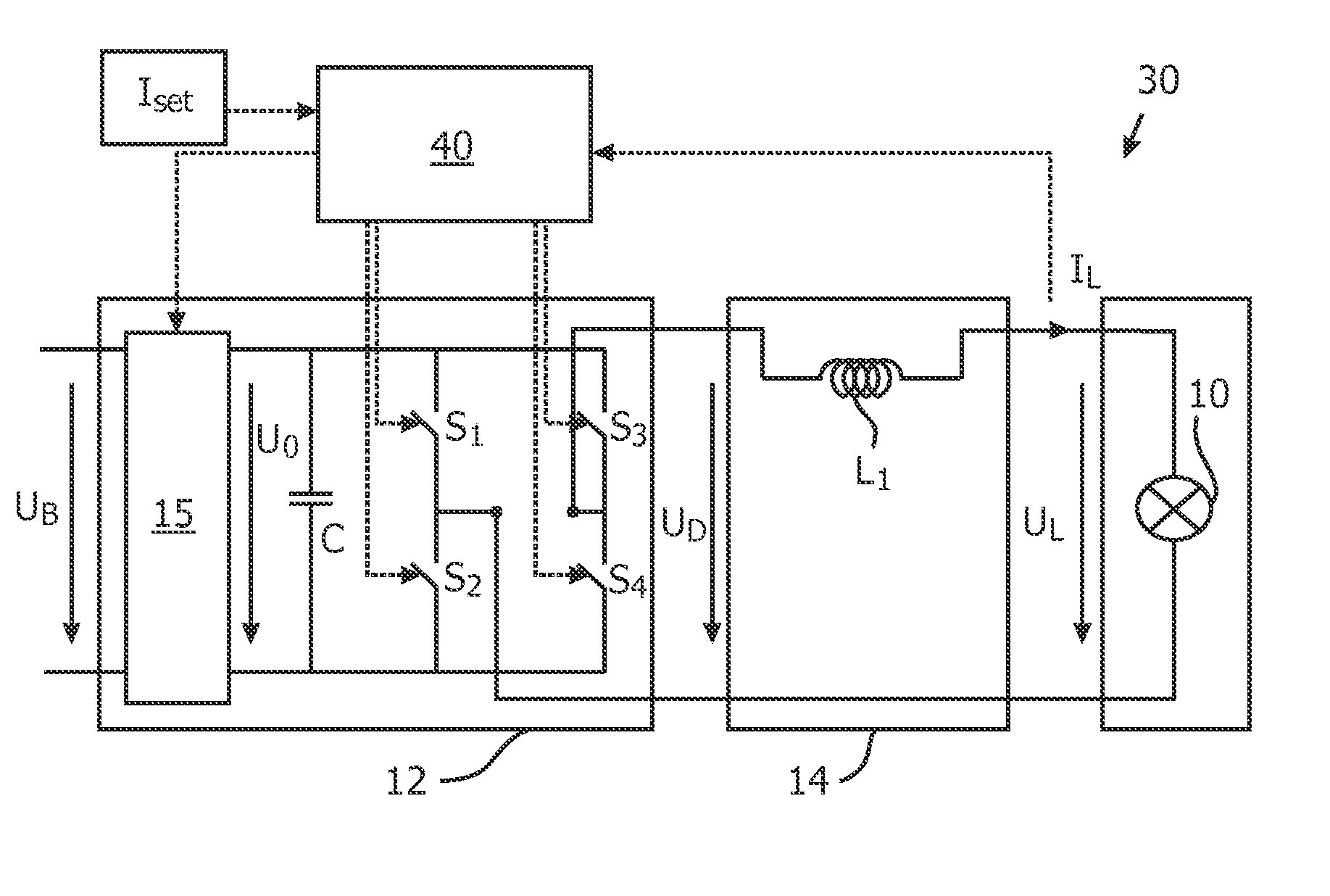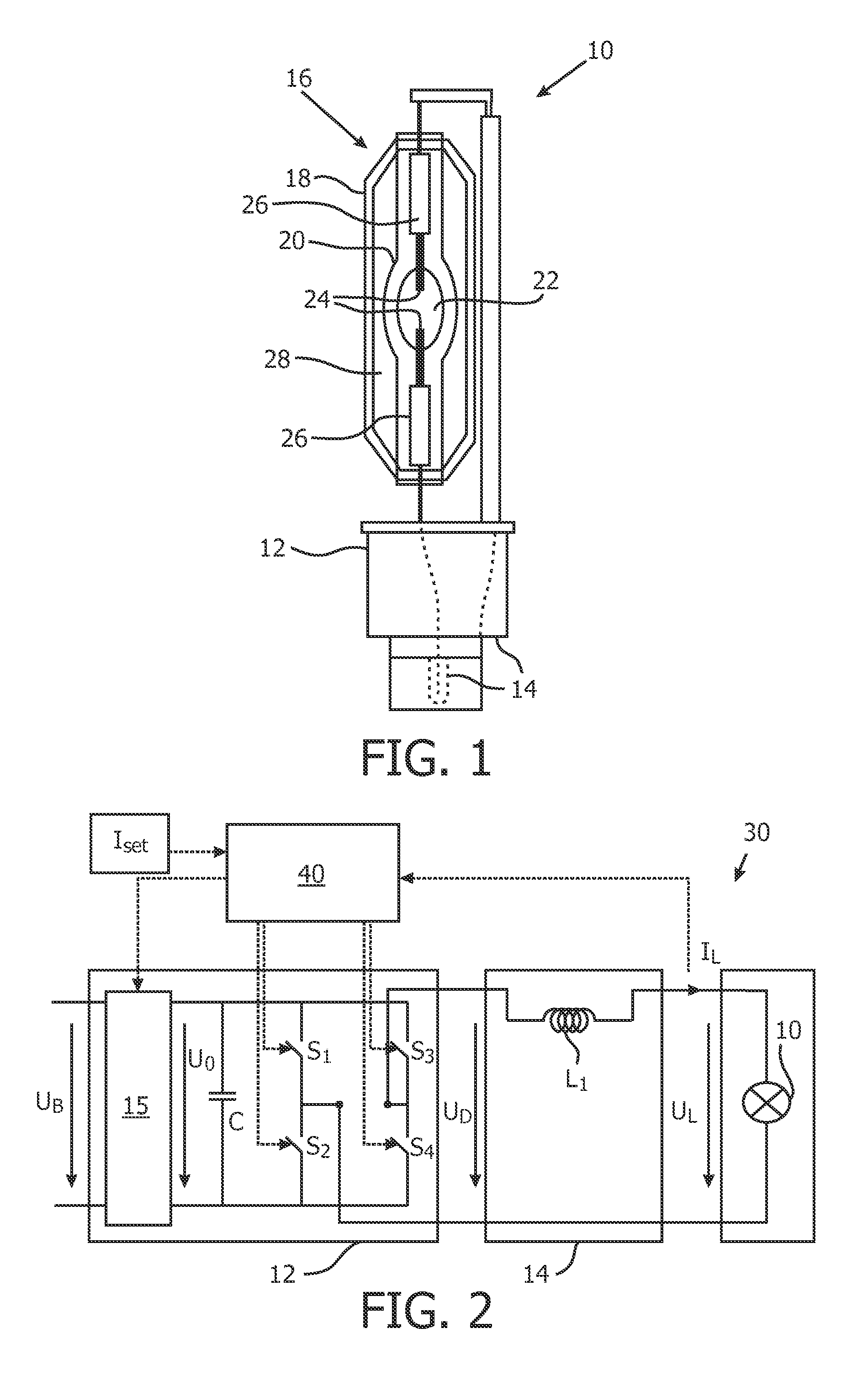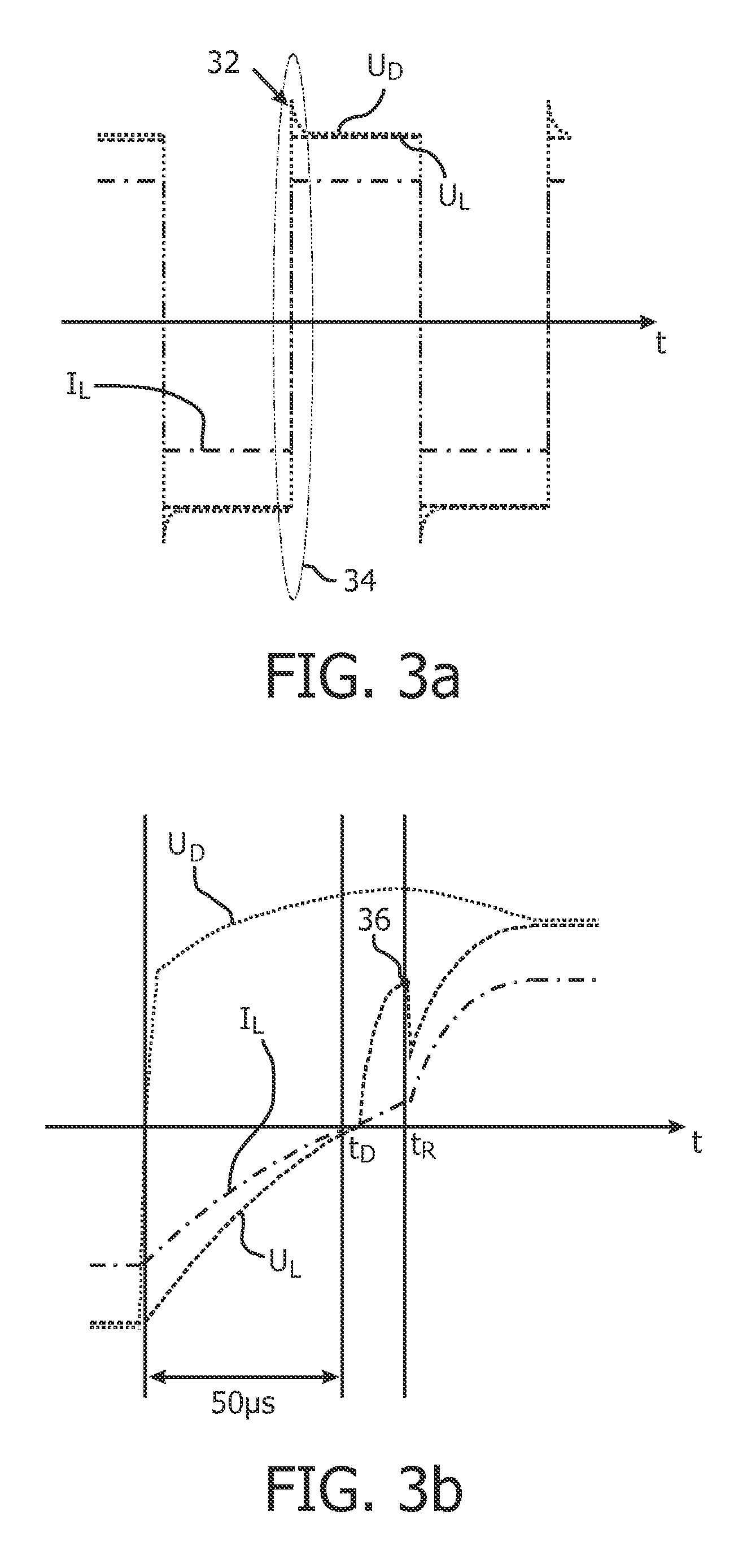Pulsed operation of a discharge lamp
a discharge lamp and discharge lighting technology, applied in the field of discharge lamps, can solve the problems of exaggerated safety electrical designs, large dimensions of safe electrical designs to always obtain successful commutation, etc., and achieve the effects of increasing pulse height or width, reducing the loss of lamp efficiency, and increasing the luminous flux
- Summary
- Abstract
- Description
- Claims
- Application Information
AI Technical Summary
Benefits of technology
Problems solved by technology
Method used
Image
Examples
first embodiment
[0076]As shown in FIG. 4a for a first embodiment, the pulses 50 are applied directly after commutation. This prompts the closed-loop control of controller 40 in FIG. 2 to quickly raise the driver voltage UD after commutation.
second embodiment
[0077]In an alternative second embodiment of FIG. 4b, pulses are applied both before (pulses 52) and after (pulses 50) commutation.
[0078]The present inventors have found that different values for the pulse width PW and the pulse height PH may be chosen to influence the dynamic voltage delivery capability of the driver 12. FIG. 7 shows a dependency of the maximum voltage UD obtainable after the defined delivery time tD of 50 μs after commutation in dependence on the pulse height PH. As shown, the dynamic capability of the driver 12 may thus be significantly influenced by the control applied from controller 40, without any further changes to the driver circuit 12. Thus, by choosing an appropriate pulse 50, a desired dynamic capability of the driver circuit 12 may be obtained.
[0079]However, it should be kept in mind that such pulses have drawbacks, such as increased losses and higher overall requirements for the elements of the circuit 30, such that the unnecessary application of pulse...
PUM
 Login to View More
Login to View More Abstract
Description
Claims
Application Information
 Login to View More
Login to View More - R&D
- Intellectual Property
- Life Sciences
- Materials
- Tech Scout
- Unparalleled Data Quality
- Higher Quality Content
- 60% Fewer Hallucinations
Browse by: Latest US Patents, China's latest patents, Technical Efficacy Thesaurus, Application Domain, Technology Topic, Popular Technical Reports.
© 2025 PatSnap. All rights reserved.Legal|Privacy policy|Modern Slavery Act Transparency Statement|Sitemap|About US| Contact US: help@patsnap.com



